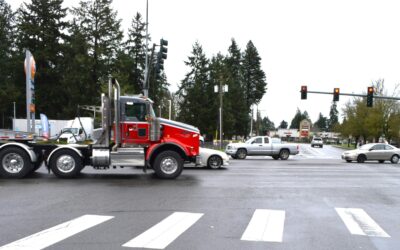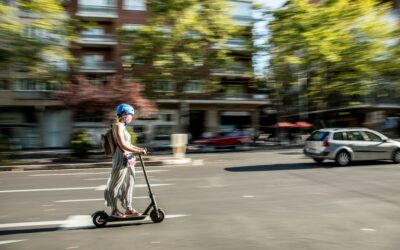As September moves toward the fall equinox, Georgia drivers face one of the most overlooked hazards on the road—sun glare. Low sun angles at morning drop-off and evening commutes sit right at windshield height, washing out traffic lights, hiding pedestrians and cyclists, and turning dry pavement into a mirror. If you are injured in a sun-glare crash this month, understanding fault, evidence, and insurance in Georgia can make all the difference in your personal injury claim.
Sun glare is predictable, not an excuse. Around the equinox, sunrise and sunset align more closely with east–west roads, which means longer stretches of blinding light across interstates and neighborhood arterials. Glare can hit right as drivers turn left across traffic or approach crosswalks by schools and parks. Dusty windshields, worn wiper blades, and pitted glass magnify the problem, as do wet roads that reflect the sun back toward eye level. Even at “city speeds,” these crashes cause concussions, whiplash, fractures, and serious soft-tissue injuries.
Under Georgia’s fault system, drivers must operate safely for conditions, including glare. That means slowing down, increasing following distance, using sunglasses/visors, leaving extra room to stop, and waiting for a clear view before turning left. When a motorist barrels through a washed-out intersection, rolls a stop because they “couldn’t see,” or rear-ends a line of traffic during a sunburst, they can still be liable for the resulting injuries. In commercial cases, employers may share responsibility if poor maintenance (streaking wipers, cracked windshields, burned-out lights) contributed to the wreck.
If a glare-related collision happens, take care of your health first—then build your proof. Early documentation of lighting conditions and roadway layout is often the difference between a paid claim and a denial.
What to do after a sun-glare crash
- Call 911 and get a medical evaluation. Concussion and neck/back injuries often emerge hours later; early records tie symptoms to the crash.
- Document visibility. Photograph the sun’s position, shadow lines, reflections off the road, and any visor/sunglasses in use. Capture wide shots of the intersection, lane markings, and signals.
- Preserve the vehicles. Take close-ups of windshield condition, wiper blades, headlight/taillight status, and any windshield tint or cracks that affected visibility.
- Collect witness information. Bystanders can confirm that a driver “never slowed,” “couldn’t see the light,” or “blew through the crosswalk.”
- Request the police report number. Ask officers to note time, direction of travel, sun position, and whether glare was claimed as a factor.
- Secure video and data. Save dash-cam files; ask nearby homes and businesses for exterior footage. Event data recorders may show speed and braking (or the lack of it).
- Avoid recorded statements. Insurers may try to frame this as “just the sun.” Provide basics only until you speak with a lawyer.
Who may be liable—and why it matters
Most glare crashes involve a negligent driver who failed to slow or yield, but more than one party can share fault. A delivery company may face exposure for sending a vehicle out with a cracked windshield or worn wipers. In rare cases, road design issues—missing glare screens, poorly placed signals, or inadequate signage—may create additional avenues for recovery. Identifying every policy (at-fault liability, UM/UIM, MedPay, and any commercial coverage) can significantly increase your total compensation.
Common injuries and damages in glare-related collisions
Victims often suffer whiplash, herniated discs, concussions, shoulder and knee injuries from bracing, fractures, and psychological distress. Beyond ER care, many need imaging, physical therapy, injections or surgery, and time away from work or school. A Georgia personal injury claim can recover medical bills and future treatment, lost wages or reduced earning capacity, pain and suffering, and property damage or total loss. Replace child car seats, glasses, phones, or laptops damaged in the wreck and keep the receipts—these are often compensable.
Prevention tips for September commutes
- Clean your windshield (inside and out); replace streaking wipers now.
- Keep a quality pair of polarized sunglasses in the car.
- Use visors early and avoid following large vehicles so you can see traffic lights ahead.
- Add extra time for school-zone travel and left turns across oncoming traffic.
- If you’re blinded, slow down and wait—don’t guess.
How Gunn Law Group proves glare negligence
We move fast to capture what the sun tries to erase: photographs of lighting at the crash time, 911 audio and body-cam footage, dash-cam/CCTV video, and event data recorder downloads showing speed and braking. We document windshield and wiper condition, verify the exact sun position with weather data, and coordinate with your medical providers to build a clear, chronological damages story. Then we negotiate—aggressively—with every responsible insurer to pursue the maximum compensation Georgia law allows.
If a fall equinox sunburst turned your commute into a collision, don’t let an insurer write it off as “just bad lighting.” Need a home run? Call the Big Gunn at 888-BIG-GUNN for a free case review with an Atlanta car accident lawyer who knows how to win sun-glare claims.




